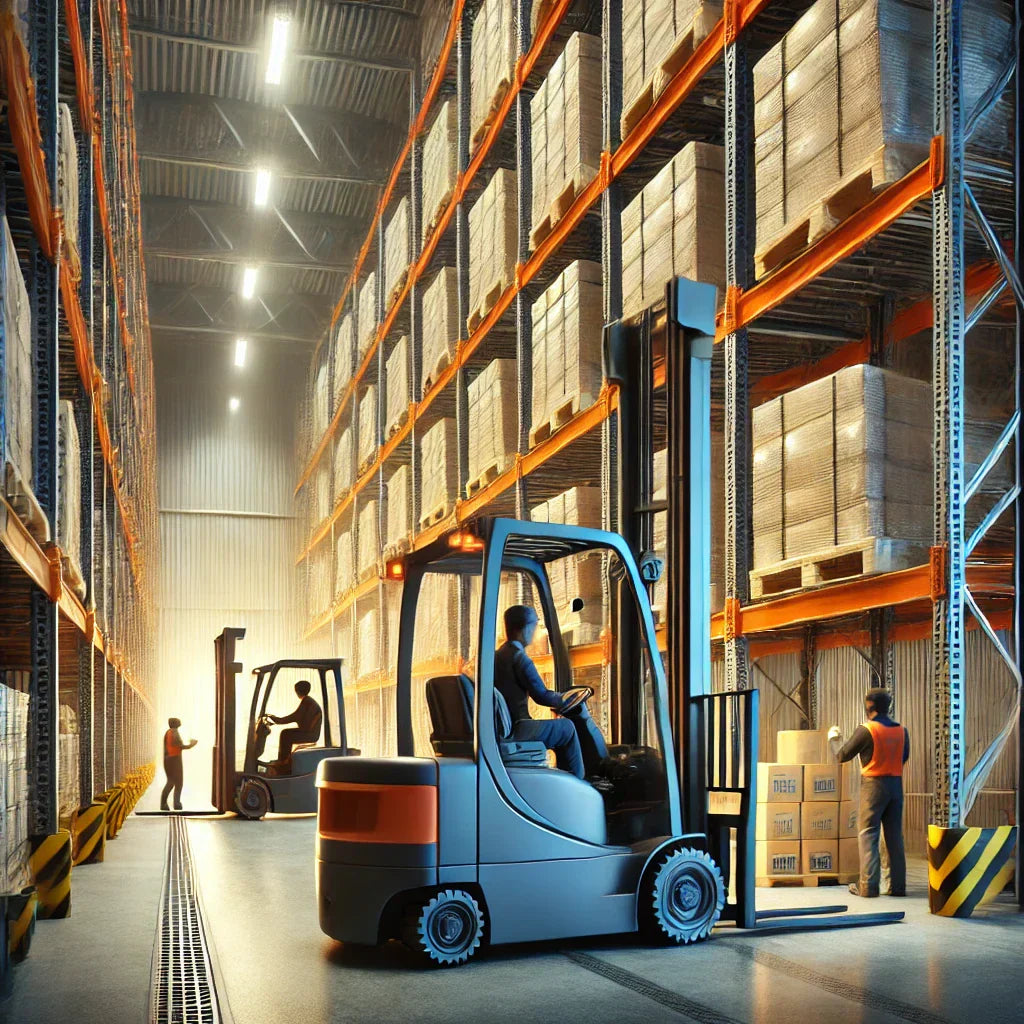Forklifts are indispensable machines in warehouses, construction sites, manufacturing facilities, and logistics hubs. However, selecting the right forklift for your business depends on the type of work environment, load capacity, terrain, and operational efficiency. In this guide, we’ll explore the various types of forklifts, their uses, and how advanced forklift models can help businesses improve productivity and safety.
Why Choosing the Right Forklift Matters
Not all forklifts are built the same. Different models are designed to perform specific tasks, and selecting the wrong one can lead to inefficiency, increased costs, and potential safety hazards. Factors to consider when choosing a forklift include:
-
Load capacity: How much weight does the forklift need to lift?
-
Maneuverability: Is the working space narrow or open?
-
Power source: Should it be electric, diesel, or LPG-powered?
-
Tire type: Cushion or pneumatic tires for indoor or outdoor use?
-
Lift height requirements: How high does the forklift need to reach?
With these factors in mind, let’s dive into the different types of forklifts, their applications, and what sets them apart.
What is a Counterbalance Forklift and How Does It Work?
Counterbalance forklifts are the most common type used in warehouses and distribution centers. They have a straightforward design with a weight at the back to balance the load at the front.
Key Features:
-
Available in electric, diesel, or LPG models
-
No outriggers, allowing easy maneuverability
-
Can be used both indoors and outdoors
Common Uses:
-
Warehousing and storage facilities
-
Loading and unloading goods
-
Retail and distribution centers
Counterbalance Forklifts come with precision control and energy-efficient engines, making them ideal for high-performance operations.
What Are Reach Trucks and How Do They Help in Warehousing?
Reach trucks are specialized forklifts designed for high shelving and tight spaces in warehouses. Their extendable forks allow operators to reach deep into racking systems.
Key Features:
-
Narrow design for working in tight aisles
-
Extended lift height capabilities
-
Battery-powered for quiet, emission-free operation
Common Uses:
-
High-rise warehouse storage
-
Order picking and stock replenishment
-
Retail inventory management
Reach Trucks offer advanced stability systems and ergonomic operator cabins, reducing strain and improving efficiency.
How Do Pallet Jacks Work and What Are Their Benefits?
Pallet jacks, also known as pallet trucks, are simple forklifts used for moving pallets within warehouses and retail spaces.
Key Features:
-
Compact and easy to use
-
Available in manual and electric versions
-
Designed for low-level lifting
Common Uses:
-
Transporting goods in warehouses and supermarkets
-
Loading and unloading delivery trucks
-
Short-distance material handling
Electric Pallet Jacks provide long battery life and smooth operation, ensuring a seamless material handling experience.
What Are Rough Terrain Forklifts and How Are They Used?
Designed for outdoor use, rough terrain forklifts have large pneumatic tires and powerful engines to handle uneven surfaces.
Key Features:
-
High ground clearance
-
Heavy-duty suspension for stability
-
Diesel or LPG-powered for higher torque
Common Uses:
-
Construction sites
-
Lumber yards and outdoor material handling
-
Agriculture and farming operations
Rough Terrain Forklifts are built with reinforced frames and heavy-duty tires, ensuring superior performance on challenging terrains.
How Do Narrow Aisle Forklifts Improve Storage Efficiency?
Narrow aisle forklifts are designed to operate in tight warehouse spaces with limited room for maneuverability.
Key Features:
-
Compact size for tight spaces
-
High lift capacity for vertical storage
-
Electric-powered for indoor efficiency
Common Uses:
-
High-density storage facilities
-
Automated warehouse environments
-
Order fulfillment centers
Smart navigation systems and precise control, making them perfect for maximizing storage space.
What Are Telehandlers and How Do They Differ from Other Forklifts?
Telehandlers are versatile forklifts with extendable arms, capable of lifting materials to greater heights and distances.
Key Features:
-
Extendable boom for long reach
-
Ability to lift and place loads at elevated heights
-
Multi-purpose use for construction and industrial sites
Common Uses:
-
Construction material placement
-
Agricultural operations
-
Heavy-duty logistics
Hydraulic stabilization and rugged durability, ensuring optimal performance in demanding environments.
What Are Order Pickers and How Are They Used in Logistics?
Order pickers are warehouse forklifts designed to lift operators to the height of shelves for picking individual items.
Key Features:
-
Operator platform for easy access to inventory
-
High lift capability for warehouse racking
-
Battery-powered for efficient energy use
Common Uses:
-
E-commerce and retail distribution centers
-
Inventory picking in high-storage facilities
-
Warehousing operations
Enhanced operator safety and smooth maneuverability, helping businesses streamline order fulfillment processes.
How to Choose the Right Forklift for Your Business
When selecting a forklift, consider:
-
Load capacity requirements: Choose a forklift that can handle your typical loads efficiently.
-
Work environment: Indoor spaces require electric models, while outdoor applications may need diesel-powered forklifts.
-
Maneuverability: If working in tight spaces, a reach truck or narrow aisle forklift may be ideal.
-
Fuel preference: Electric forklifts are eco-friendly, while IC models provide higher power for heavy-duty lifting.
By investing in cutting-edge forklift solutions, businesses can enhance productivity, improve safety, and reduce operational costs.
Selecting the right forklift is essential for efficient material handling, workplace safety, and cost savings. With various forklift types available, businesses should evaluate their specific needs to find the best match. Innovative forklifts offer durability, performance, and advanced technology, making them the ideal choice for modern industries. Whether it’s a warehouse, construction site, or logistics hub, having the right forklift will drive operational success.




